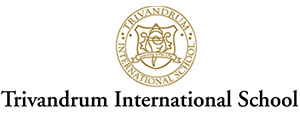Reading is an essential skill for academic success, personal growth, and lifelong learning. However, many students struggle with reading efficiently and comprehending the material they engage with. Developing effective reading strategies can significantly enhance their understanding and retention of information. In this article, we explore key reading strategies that students can adopt to improve their learning experience.
1. Pre-Reading Preparation
One of the most critical strategies is pre-reading, which helps students familiarise themselves with the material before delving deeper. Pre-reading involves skimming through the text, identifying headings, subheadings, and keywords. This initial exposure sets the stage for a more focused and comprehensive reading experience.
Pre-Reading Checklist
| Step | Description |
|---|---|
| Skim the text | Quickly glance through the text to get a general idea of the content. |
| Identify keywords | Look for bolded or italicised words that indicate important concepts. |
| Understand the layout | Note any graphs, charts, or tables that could aid comprehension. |
Pre-reading prepares the mind to anticipate what is to come, making the actual reading process more efficient.
2. Active Reading
Active reading goes beyond merely moving your eyes across the page. It involves engaging with the content critically. Students can highlight or underline key points, take notes, and ask questions while reading. These activities stimulate critical thinking and help in better retention of the material.
Tips for Active Reading:
- Ask questions like “What is the main idea?” or “How does this information connect to what I already know?”
- Take brief notes in the margins or in a notebook.
- Summarise each paragraph or section in your own words to solidify understanding.
3. Visualising and Mental Mapping
Visualisation is a powerful tool that aids memory and comprehension. When students read, they should try to create mental images of the information being presented. This technique helps in retaining abstract ideas and concepts.
Mind maps or concept maps can also be valuable in organising information visually. These tools help students break down complex information into manageable parts. For instance, when reading a lengthy chapter, breaking it into smaller sections through a mind map can enhance understanding.
4. Vocabulary Building
A strong vocabulary is essential for effective reading. Students often encounter unfamiliar words in their texts, which can hinder comprehension if left unresolved. Developing the habit of looking up unfamiliar words and incorporating them into daily use can improve a student’s reading fluency.
Vocabulary-Building Techniques
| Technique | Benefit |
|---|---|
| Keep a vocabulary journal | Helps track new words and their meanings. |
| Use context clues | Encourages understanding of word meanings based on surrounding text. |
| Practice with flashcards | Repeated exposure reinforces new vocabulary. |
By integrating new words into their regular language usage, students not only enhance their reading comprehension but also their overall communication skills.
5. Pacing and Time Management
One of the overlooked aspects of reading is pacing. Many students either rush through their readings or take too much time, which can affect comprehension. Setting a reasonable pace and allocating specific times for reading ensures that students absorb the material without feeling overwhelmed.
A simple yet effective time management strategy is the Pomodoro Technique. This technique involves working for 25 minutes, followed by a 5-minute break, ensuring a balance between focus and relaxation. Breaking up reading sessions with short intervals helps maintain concentration and prevents fatigue.
6. Note-Taking and Summarising
Taking notes is a time-tested strategy to enhance understanding and retention. Students can summarise what they have read in their own words. This process allows for the consolidation of knowledge and helps identify areas that may require further clarification.
When summarising, students should focus on key points and ensure that they are not simply copying from the text. Writing down thoughts in their own language ensures a deeper level of processing and comprehension.
7. Review and Reflect
After completing a reading assignment, reviewing the material is crucial. Reviewing doesn’t just mean rereading the text but also reflecting on the key points, assessing one’s understanding, and connecting the material with previously learned concepts. This reflective practice solidifies the information in long-term memory and prepares students for future applications, such as exams or discussions.
Reading is more than just a mechanical skill; it is a cognitive process that requires active engagement and strategic planning. By adopting effective reading strategies such as pre-reading, active reading, visualisation, vocabulary building, and time management, students can improve their comprehension, retain information more effectively, and enjoy their reading experience. Developing these strategies is key to becoming a lifelong learner.



